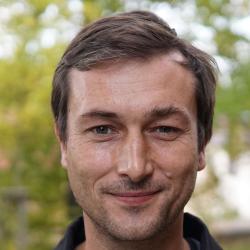Jim McCalpin will teach his 13th Field Course in Neotectonics and Paleoseismology from May 22-31, 2013 in Crestone, Colorado, USA. This is a “9-day summer Field Course, offered by the Crestone Science Center, which teaches the latest field techniques, but also contains evening lectures covering the entire field of Paleoseismology.” more
-
Field Course in Neotectonics & Paleoseismology – May 22-31, 2013 in Crestone, Colorado, USA
2013-03-11 | in Teaching | 2 responses -
Earthquake Engineering and Seismology Summer Course in Iceland 2013
2013-02-28 | in TeachingThe following mail reached us today:
“A new International Graduate Summer Course in Iceland 2013:
EARTHQUAKE ENGINEERING AND ENGINEERING SEISMOLOGY
Iceland, 30 May – 21 June 2013
www.earthquake.is
more -
Earthquakes and dust clouds
2013-02-25 | in Earthquake | one responseToday’s post of the Landslide Blog about a rockfall caused by a volcanic earthquake reminds me about something that’s in my mind for years already. Could we use dust deposits as a paleoseismological archive? Dust clouds of all sizes, ranging from tiny to huge, can be associated with seismic shaking, especially in arid and mountainous regions. Here I have collected a few videos I found on YouTube. When large amounts of dust settle they should form a distinctive layer recognizable in the sedimentary record, comparable to volcanic ash deposits. Of course they will be harder to be identified, since the material is the local one. I guess this could be done, similar to turbidites in marine paleoseismology. There are papers that describe changes in the aerosol content in the atmosphere after earthquakes, so why not look for them on earth? more
-
What’s up? The Friday links (56)
2013-02-22 | in The Friday LinksIt’s been a while since the last Friday links, so today’s list is rather long. Of course the Russian meteoroid-meteor-meteorite (yes, in this order!) was an absolutely amazing, though destructive phenomenon. The air blast was registered equivalent to an earthquake of magnitude 2.7. Read Livescience’s article here and read this text to get to know about meteors and seismograms in general. more
-
New paleoseismology papers in BSSA
2013-02-19 | in PaperSeveral paleoseismology papers have been published in the latest issue of BSSA (103-1). There’s interesting new data on faults in New Zealand, California, and several regions in China, Taiwan and India. For sure I will read the following papers: more
-
Call for abstracts on earthquake effects for 2 sessions at IAEG XII Congress (Torino), 2014
2013-02-16 | in MeetingDear colleagues,
please consider submitting abstracts to the following session to be held at the IAEG XII Congress in Torino, 15-19 September 2014:
- Off-fault coseismic surface effects and their impact in urban areas
- Surface fault-rupture hazard in urban areas
-
Earthquakes in Austria/Slovenia and Japan
2013-02-03 | in EarthquakeOn 2 Februar, a magnitude 4.5 earthquake occurred in shallow depth (~2-7 km) directly at the border between Austria and Slovenia. USGS reports an oblique-slip focal mechanism and a magnitude of Mw4.0 only. According to the Austrian Zentralanstalt für Meteorologie und Geodynamik the quake was felt widely and even in Vienna. Very light damage has been reported from the epicentral area. more
-
What’s up? The Friday links (55)
2013-02-01 | in The Friday LinksWe’ve seen several magnitude 6 earthquakes last week. On 28 Januar, a shallow M6.1 strike-slip event occurred in eastern Kazakhstan. A little surprise only, we knew about thrust mechanisms in this area, but of course some strike-slip movements do not change the big picture. Would be interesting to check for surface ruptures. This is, by the way, the study area of our friend and colleague Angela Landgraf. Maybe we can convince her to write something about the paleoseismological background of that area? more
-
What’s up? The Friday links (54)
2013-01-25 | in The Friday LinksSomething many people have been waiting for happened last week. Judge Marco Billi explained his verdict in the L’Aquila case. In a 950 page document he published the so-called “motivazione”, stating that “the deficient risk analysis was not limited to the omission of a single factor, but to the underestimation of many risk indicators and the correlations between those indicators.” This should have been understood by the scientists, but instead they delivered a “superficial, approximate and generic” analysis. more
-
Annals of Geophysics Vol. 55 – Active Tectonics in the Mediterranean and Europe
2013-01-21 | in PaperAnnals of Geophysics’ latest Special Issue 55-5 is focussed on Earthquake Geology: Active tectonics in the Mediterranean and Europe: site studies and application of new methodologies. This issue was edited by L. Cucci, P. M. De Martini, E. Masana, and K. Vanneste and contains seven papers. As always, all articles are open access. more

